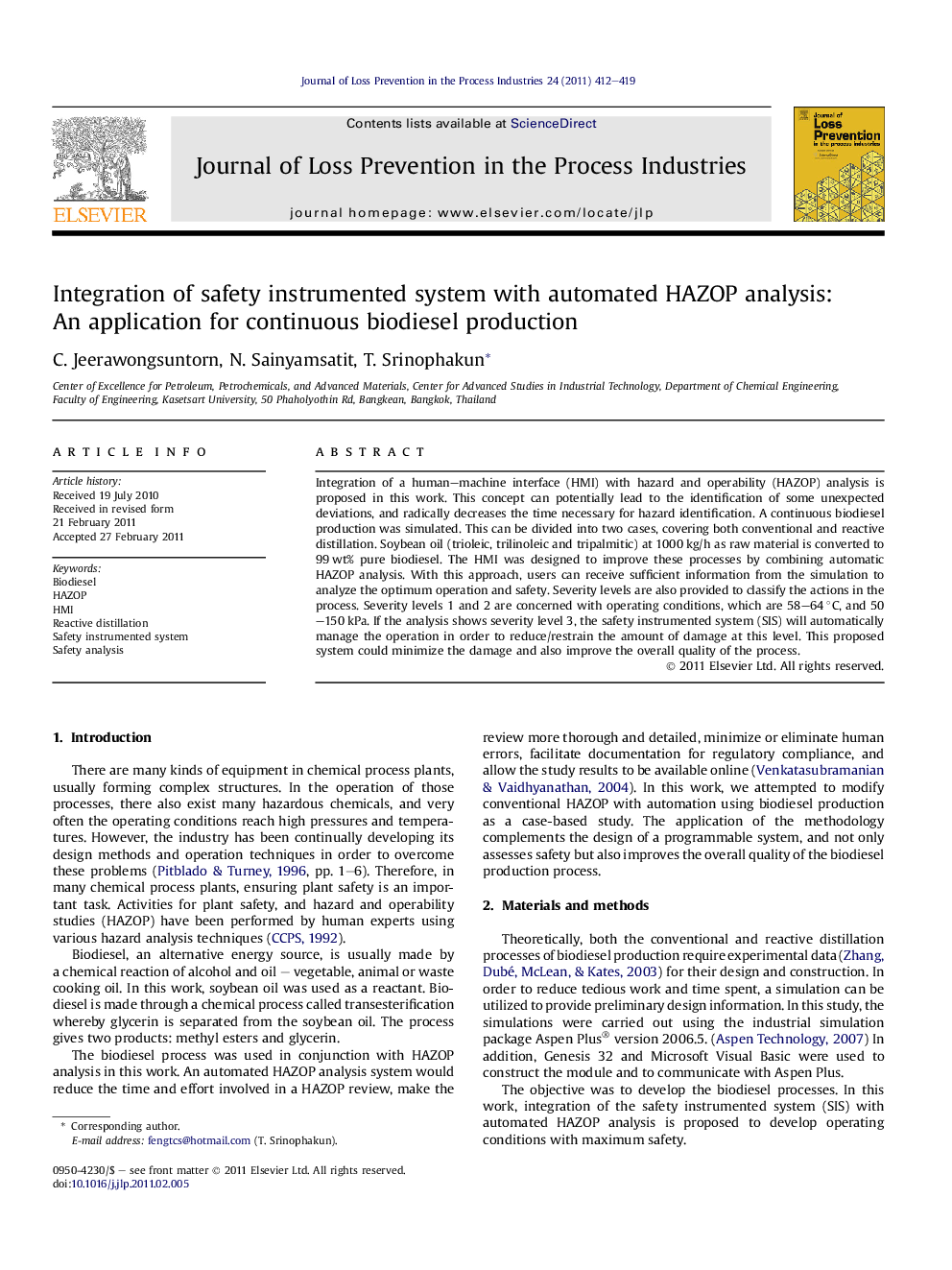| Article ID | Journal | Published Year | Pages | File Type |
|---|---|---|---|---|
| 586544 | Journal of Loss Prevention in the Process Industries | 2011 | 8 Pages |
Integration of a human–machine interface (HMI) with hazard and operability (HAZOP) analysis is proposed in this work. This concept can potentially lead to the identification of some unexpected deviations, and radically decreases the time necessary for hazard identification. A continuous biodiesel production was simulated. This can be divided into two cases, covering both conventional and reactive distillation. Soybean oil (trioleic, trilinoleic and tripalmitic) at 1000 kg/h as raw material is converted to 99 wt% pure biodiesel. The HMI was designed to improve these processes by combining automatic HAZOP analysis. With this approach, users can receive sufficient information from the simulation to analyze the optimum operation and safety. Severity levels are also provided to classify the actions in the process. Severity levels 1 and 2 are concerned with operating conditions, which are 58–64 °C, and 50–150 kPa. If the analysis shows severity level 3, the safety instrumented system (SIS) will automatically manage the operation in order to reduce/restrain the amount of damage at this level. This proposed system could minimize the damage and also improve the overall quality of the process.
► We proposed integration of a safety instrumented system with automatic HAZOP analysis. ► Simulation of a continuous biodiesel production to analyze the optimal operating conditions. ► Determining the hazardous events in biodiesel process.
